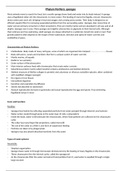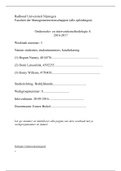Summary
Summary Phylum Cnidaria
- Institution
- University Of South Africa (Unisa)
these notes provide a comprehensive summary of cnidaria in a clear and easily understandable way. These notes include information from past exam papers and will enable you to succeed at zol1501
[Show more]





